Change is on the horizon with Great British Railways (GBR). Philip Haigh advocates a national campaign to ensure it delivers for customers.
In this article:
Change is on the horizon with Great British Railways (GBR). Philip Haigh advocates a national campaign to ensure it delivers for customers.
In this article:
- Address immediate challenges, like industrial relations, and focus on improving customer service through a national campaign.
- Prioritize collaboration between train operators and Network Rail to enhance infrastructure reliability, track costs, and boost passenger satisfaction over time.
- Major organizational changes, such as merging train operators, require careful consideration due to potential complications.
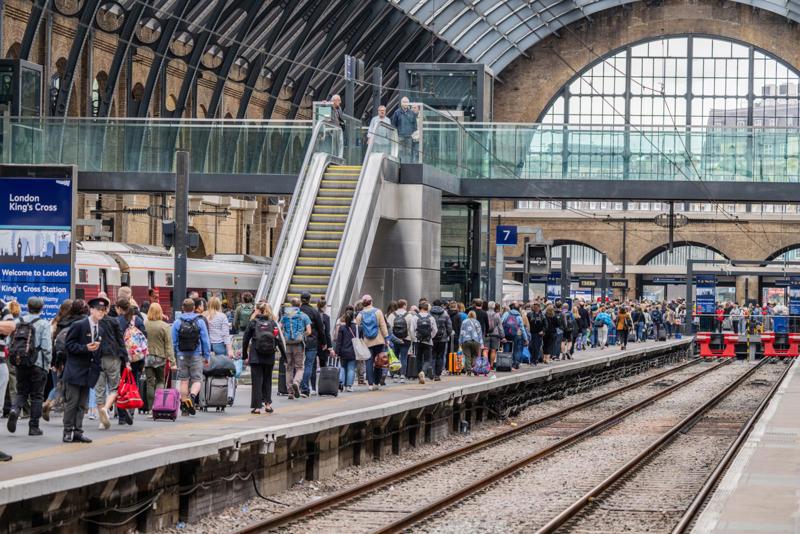
If there’s one thing Great British Railways must bring, it’s long-term certainty.
Yet that’s the one thing GBR cannot bring. It is (or will be) a government creation. And what ministers create, they can discard. Ask the Strategic Rail Authority.
But you can build towards it. And you start by fixing the immediate problems, the biggest of which is industrial relations at train operators.
It’s an area in which Transport Secretary Louise Haigh has moved further compared with her predecessor, Conservative Mark Harper, by talking directly with trade unions and resolving the drivers‘ dispute.
She also quickly called in train operators, and saw their managing directors with their Network Rail opposite numbers.
Some insiders suggest she was surprised to hear how much NR was contributing to overall poor performance. But that’s no surprise when so many complaints about delays and cancellations focus on the operators (the public face of the railway), which rather lets NR off the hook.
The essential idea behind GBR is to join track and train together. Delivering passengers to destinations punctually, and for a fair price, needs both. As does freight.
Such closer working is not new. Network Rail and South West Trains created an alliance a decade ago to improve performance. Likewise, Scotland’s Railway.
GBR should take the concept forward. Together, it can better understand the costs and revenue of rail services and infrastructure - the joint P&L (or profit and loss account).
It should go further to better understand who is travelling, where they are going, and why. And there could be no better way to launch GBR than by starting a national campaign - ‘Putting Passengers First’.
Again, this isn’t new. It’s been done in pockets in the past. But a national campaign that brings train operators and NR together will be very powerful - even more so if it also involves other key suppliers such as rolling stock maintenance companies, so that they understand the importance to passengers of working air-conditioning and clean toilets.
Done well, Putting Passengers First should create the conditions for GBR’s success. Initially, this may only be a perception that better days are coming, but it will help shake the railway from its current torpor. With enough time, the result should be higher passenger satisfaction.
With success will come the opportunity to change perceptions more widely, particularly with HM Treasury, and to help extinguish the feeling that spending £1 is not simply a cost, but an opportunity to earn £2.
This may help when it comes to reviewing fares, to combat a long-term feeling that trains provide poor value for money (yet many today are full, which suggests passengers have few problems finding fares they like).
Such a widespread review brings perils - there are inevitably winners and losers.
Not everyone can win (that is, see a lower fare), but should all losers facing higher fares be protected by shifting their burden onto taxpayers in the form of higher subsidies? That’s a question only ministers can answer as they balance competing priorities on the public purse.
Ministers should work closely with GBR to explain why Britain’s railway exists and what it should deliver. GBR must be able to describe what’s important to customers (passengers and freight) and what’s important to funders. And ministers must be able to explain what they want GBR to deliver.
The result must be a credible organisation delivering a credible product.
Today, that’s absent. This clearly shows by widespread indifference to High Speed 2’s cancellation north of Birmingham.
It was to have delivered a large increase in capacity and much faster journeys. It solves many of today’s problems of tardy and crowded trains. However, rather than being seen as that answer, public indifference suggests people saw it as more of the same, so few mourned its cancellation.
Changing operators
There are areas where GBR should not be involved. Chief of these is train operating company (TOC) boundaries.
In putting private contracted operators to the sword, there’s a strong temptation to then merge them into larger organisations - or perhaps even one. This is a surefire way of taking managers’ eyes off passengers and onto internal reorganisation. It’s a distraction.
Many of the railway’s boundaries date back centuries. Take the three operators running south of London. Today they are South Western Railway (SWR), Southern and Southeastern. In British Rail days, they were three operating divisions, latterly of BR’s Network SouthEast sector.
Go back even further, to before the 1923 reorganisation, and they were three independent companies: London and South Western Railway; London, Brighton and South Coast Railway; and the South Eastern and Chatham Railway.
History suggests they are suitably sized - big enough to drive efficiencies, but small enough to be effectively managed. Yet a merger could make sense. But that should come from evidence in the track-and-train P&L and customers’ overriding needs.
With talk of the London Mayor increasing his influence on suburban rail services in south London, clearly there are choices to make.
The future may see a boundary placed in SWR, Southern and Southeastern to separate metro services, allowing the mayor to implement improvements such as staffing stations from first to last train. If the mayor has the money for this, he could contract with GBR to have its three south London companies employ the staff to deliver this.
Elsewhere, it may look sensible to fold c2c operations running into London Fenchurch Street into neighbouring Greater Anglia. But c2c is a standalone operation with great local focus that could easily be lost inside a bigger organisation.
So, rather than consuming managers’ time in moving boundaries and transferring staff, could it be better to channel time and effort into making the railway more reliable? Focusing on what adds value?
This could be by making greater use of scheduled trains to monitor infrastructure and locate problems before they become delays.
This already happens, but there’s scope to extend monitoring operations and to use GBR as the umbrella under which to share information. It will help NR shift to predicting and preventing problems, rather than fixing faults as they occur.
There’s another reason to think carefully about train operator reorganisation: terms and conditions. When NR brought track maintenance in-house 20 years ago, it suddenly found itself with staff doing similar work under very different terms and conditions, including salaries. It’s still working through the consequences today.
Great Western Railway is still dealing with different terms and conditions following the Strategic Rail Authority’s decision to rationalise operators at London terminals, by (in this case) combining Thames Trains (Paddington’s suburban operator) with InterCity Great Western (the long-distance operator). This merger also added Wessex Trains, which was the rural operator in south-west England.
Greater Anglia was the result of similar work at Liverpool Street, while proposals to merge King’s Cross operators (GNER and Great Northern) came to nothing.
Ministers and GBR leaders may still be attracted to such changes, but it would be naive to expect them not to come with consequences. Hence the need to carefully think through such plans and take account of likely trade union demands that wages across similar work be levelled up, rather than down.
Changing trains
Despite public disquiet about perceived profits from owning trains, Transport Secretary Louise Haigh has made no moves towards taking over the big three rolling stock leasing companies - Porterbrook, Eversholt and Angel Trains - that were created at privatisation.
This partly reflects the sheer costs of doing so, but also accounts for the fact that today they are not the only owners of trains.
There is a market to providing funds to buy trains, and since privatisation it has attracted companies that usually form specific subsidiaries for a particular fleet of trains.
Hence Rock Rail’s subsidiary, Rock Rail South Western plc, which owns only the Class 701s used by South Western Railway.
Its accounts acknowledge that these trains may not be leased beyond next May, when the current lease ends. However, it adds: “This risk is minimised through the lack of alternative rolling stock that can provide passenger services on the routes where the company’s trains operate (and the high cost and long lead times of building new ones).”
It’s possible that the Department for Transport cuts out private funders from future rolling stock deals, or that GBR plays a much harder negotiating game to secure lower-cost, long-term deals.
Also, GBR may yet use its uniform front to secure deals that make rolling stock more interchangeable. Just as staff terms and conditions diverge when they work for multiple operators, so rolling stock can change as each operator insists on tweaks.
Of course, it’s not in a rolling stock owner’s interest for a fleet such as the Class 378s to become too varied (it makes redeployment more expensive). But if software differs between sub-fleets, for example, then overall it’s harder to shift trains to where they’re needed to reflect passenger demand.
GBR may also wish to examine rolling stock depots. Many sit on historic railway land owned by Network Rail. Some are subject to leases held by train operating companies, others by third parties responsible for maintaining a particular fleet. Hence, Alstom subsidiary West Coast Traincare holds the lease to Manchester’s Longsight depot.
In the future, GBR will own NR and the InterCity West Coast operator for which West Coast Traincare maintains Class 390 Pendolino electric multiple units. GBR may decide to buy out maintenance contracts and bring this work in-house into its train operator.
Once again, GBR will need to understand the consequences such a change will bring. It should test the change to see if it improves matters for passengers by delivering a cheaper or more punctual railway.
Having become accustomed to using private funding for much railway spending, there’s a chance that supporters of nationalisation see a switch to state funding as the answer to their dreams.
As historian Terry Gourvish writes in British Rail 1974-1997 of negotiations with government: “In November [1973] investment ceilings were fixed for a four-year cycle at a level some 20% below British Rail’s expectations. Then, to the [BR] Board’s dismay, external circumstances almost immediately prompted a further cut of 20% for the first four years, a decision announced in December, only three weeks after the minister had endorsed the plan.”
Gourvish continues: “Worse was to follow. In May 1974 the Department [of Transport] asked the Board to assess the effect of a cut of 15% for 1975/76, and in July it asked the railways to work to cuts of 10% in each of the following two years.”
The country was in economic turmoil at the time, but these cuts were imposed by Conservative and Labour ministers - an election in February 1974 saw Labour take power from the Tories.
As today’s Chancellor Rachel Reeves said in July: “If we cannot afford it, we cannot do it.” It remains to be seen what Britain can afford when it comes to rail.
Changing services
With a better understanding of why people travel and when, GBR can decide on trade-offs between services competing to run over a section of track.
Where there are few trains and little congestion, there’s no decision to make. But on crowded corridors, it becomes important to extract the best possible value from train paths.
Politicians in northern England have already had to decide what services to run over Manchester’s congested Castlefield Corridor, but it’s not the only busy route.
Elsewhere, GBR may need to decide on the relative merits of different services.
The corridor between Birmingham and Coventry is a good example. Here, long-distance Pendolino services share tracks with inter-regional and freight trains, as well as Transport for Wales trains from Pwllheli and Aberystwyth, which terminate at Birmingham International.
Turning round at International may be a better option than occupying a platform at busy Birmingham New Street, but it may make more sense to turn trains from Wales at Wolverhampton or even Shrewsbury to reduce congestion on the Coventry corridor.
Again, the decision should rest on what passengers need and the combination of costs and revenue such trains bring.
Making these decisions needs a fully engaged DfT to replace a previous iteration that was characterised by dither and delay. That has already changed with Haigh’s arrival as Transport Secretary and her pledge to move fast and fix things.
This impatience is making a difference. So is Alex Hynes’ arrival as the Director General responsible for Rail Services (an appointment made before Haigh’s arrival) and the appointment of Lord Peter Hendy as Rail Minister, shifting over from NR where he was chairman.
None of these three show any tendency to sit on their hands. They inherit considerable goodwill to make rail better.
Great British Railways provides that unifying structure in which to place greater emphasis on the needs of customers - passenger and freight.
But delivery will not be overnight. That’s why GBR needs a compelling vision to carry people to the better railway it must bring.
Login to continue reading
Or register with RAIL to keep up-to-date with the latest news, insight and opinion.


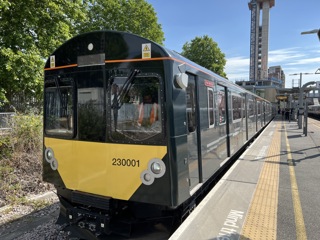
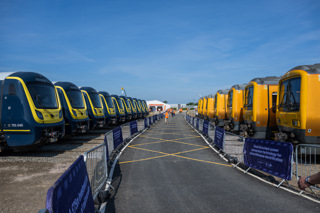
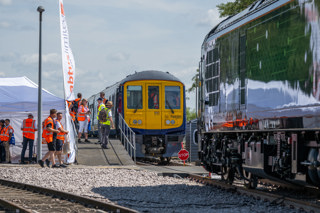
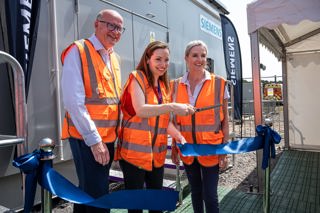
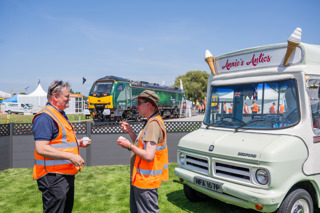











Login to comment
Comments
No comments have been made yet.